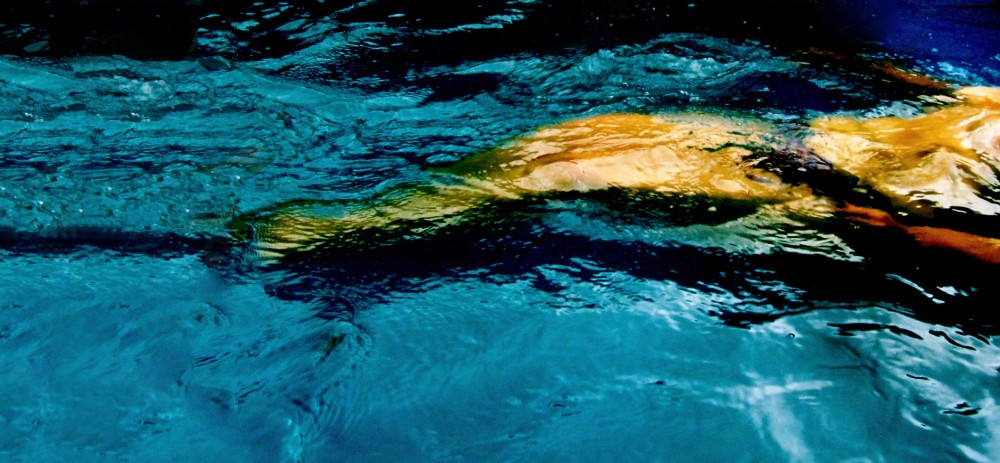As I came off the beach on my way back to Lorelle’s place this morning I met an American couple and, while we chatted about the beauty of the area, the husband drew our attention to the sky.
“Just look at those butterflies!” he said, amazed.
Sure enough the air was full of blue and black butterflies coming along Pacific Boulevard then veering off over the rooftops. The couple had to go home to Budderim but I stayed for another ten to fifteen minutes watching the thousands – perhaps hundreds of thousands – flying in a continuous flow along the same route. I went over to the shade of a driveway in order to get a better spot for photography, although I doubted if my little mobile camera would have enough pixels to make sense of the butterflies in flight. Whilst I was stood there the owner of the house came outside with a wheelbarrow.
“I hope you don’t mind,” I said, “but I stopped here to take photos of the butterflies.”
“That’s quite alright,” he smiled. “There have been loads of them in the last two weeks!”
“Not like this for two weeks?” I asked incredulous.
“Not all the time, but they’ve been around in large numbers. I reckon they’ve just come out of church!” he joked.
Well it was Sunday morning! However (as I have discovered on the Internet), the blue tiger butterflies are migratory, but there’s no need for me to tell you about them – I’ll copy and paste the information for your interest….
Critters of Calamvale Creek, Brisbane, Queensland, Australia
Hello. I’m Belinda the blue tiger butterfly.
You are lucky to see me in Calamvale Creek in Brisbane, Australia. Blue tiger butterflies don’t often visit Brisbane, but when we do there are usually massive numbers of us travelling either south or north during our migration.
Where do I live?
I’m a tropical migratory butterfly, and generally live in northern Queensland. I have been south and have stopped off to check out Calamvale Creek on my way back north.
In a couple of weeks, large numbers of us will pass through the Sunshine Coast, and in May we will be passing Townsville as we follow the east coast.
In summer I like to visit creek areas near the coast, and in winter, when food plants for our larvae are in short supply, we often mass together in huge numbers in mangroves, gullies, or around shady moist creeks. We rest on stems, dead branches, and twigs, in shade near the ground. I love mangrove milkweed.
I like the warm tropical north of Queensland. A large number of us make our home in the rainforest patch of James Cook University. Our group often breaks up if there is any rain in the dry season, then we re-form when the habitat dries out.
Best time to see us
Thousands of us can cluster together on trees and vines, even out on the Barrier Reef islands, giving the vegetation a beautiful blue-black appearance.
You are more likely to see us during very hot summers or when there are very hot days, because we are not biologically suited to cold climates.
We occasionally reach Victoria, but never South Australia. A number of us were reported near Broken Hill in February and March of 1974 during an abnormally humid summer.
Poisonous plants are important to us
The whole life cycle of blue tiger butterflies revolves around poison to various degrees.
The milkweed plants we feed on contain poisons, but our larvae are able to absorb this and keep it in their bodies to protect them from being picked off by birds.
The poisons get passed on to the pupa and then to the adult butterflies.
Of course we don’t want to kill birds — we just want to make them sick so they won’t eat us. Once they’ve tasted us, they’ll never try it again. Some vomit almost immediately.
I do prefer certain types of plants, such as milkweed and milk vines, as Monarch butterflies do too. For my young caterpillars to feed on I like to find jungle vines from the family Asclepiadaceae.
Captain Cook’s butterfly
Captain James Cook reported seeing masses of blue tiger butterflies as he sailed up the coast of Queensland in 1770.
We still accumulate in that area — such as on Magnetic Island, Brampton Island, and Cape Cleveland.
We are also found throughout tropical south-east Asia, in the Philippines, and in Sri Lanka.
We may live for 5 months or more, and make a spectacular addition to any butterfly collection.
— Belinda the blue tiger butterfly





















Wow! very interesting – Vladimir Nabokov would love it!